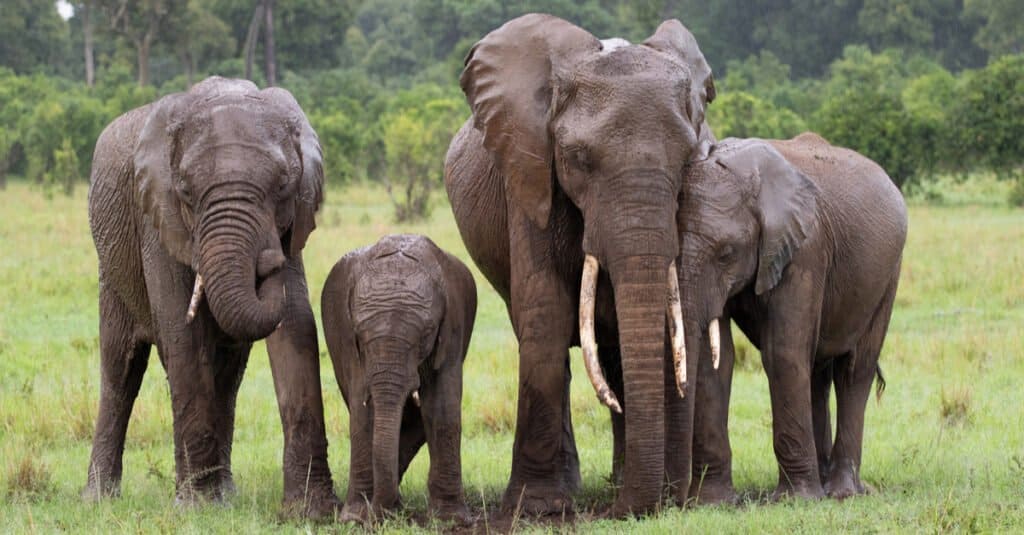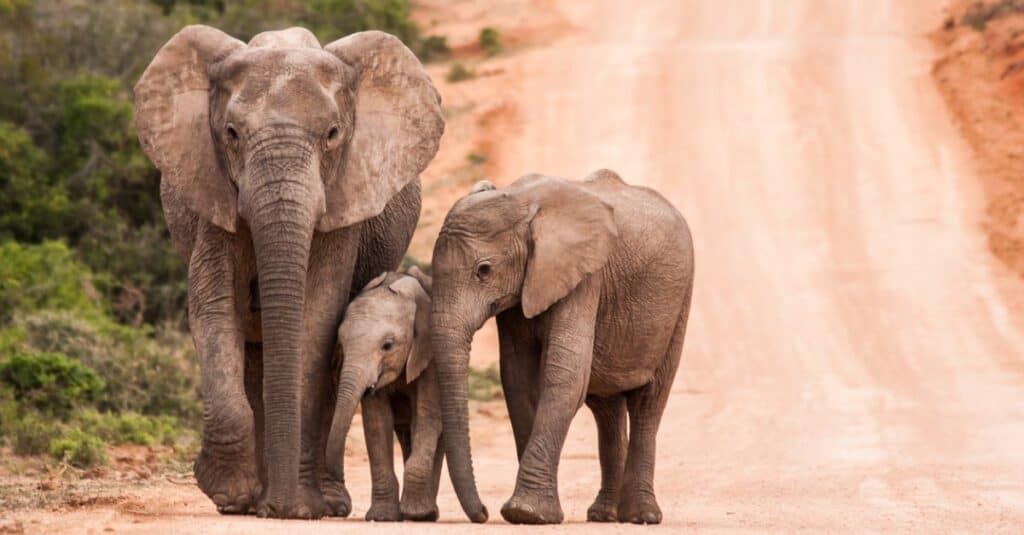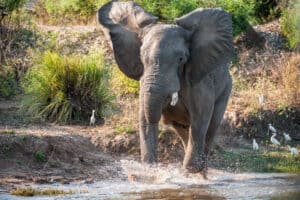Watch the Heart-Warming Clip Here
In this video, you see a mother elephant crossing a rushing river. Her baby slips away getting carried by the current. Suddenly, the mother elephant realizes her calf is missing. Quickly, she is able to catch up and guide her offspring to safety.
The rapids are no fun when you are the shortest member of the family. In this clip, we get to see the heart-stopping moment when a little elephant is in real danger of getting swept away.
Even though it manages to get near the muddy bank, the water is too deep and is moving too quickly for it to move any further. At first, one elephant steps in to try to help but is not successful.
Eventually, another larger elephant joins in the rescue mission, and between them, they manage to guide the little one to safety. Phew!
Can Elephants Swim?
Yes! Both African and Asian elephants are excellent swimmers. Given that they are so heavy, this may be hard to believe but they are very proficient in the water. Elephants can stay afloat for up to six hours at a time and have covered 30 miles in the water. They swim at about 1 mph. However, this little elephant was in an area of very fast-moving water so it was trying to walk rather than swim.
Elephants need to go near water to drink. Even though they can survive for a day or so without drinking if they have to, they need between 20 and 50 gallons of water a day to stay healthy.

Elephants live in matriarchal groups with other females and their offspring
©Neil Tyers/Shutterstock.com
Do Elephants Live in Social Groups?
Yes, the behavior that we see here is typical of elephants. They are very social animals and form strong bonds with each other. An elephant herd can contain up to around 14-20 elephants. It can be a single elephant and her offspring or can be an extended family grouping.
It is a matriarchal group and contains just females and calves. Once the male calves are teenagers they leave the herd.

African elephants have patches of thin hair on their heads.
©iStock.com/WillieErasmus
There is a hierarchy in the herd and one female (the matriarch) is the leader. The herd is highly protective of the offspring and works together to keep the calves safe. That is exactly what we see in action in this heartwarming clip!
The photo featured at the top of this post is © Johan W. Elzenga/Shutterstock.com
Thank you for reading! Have some feedback for us? Contact the AZ Animals editorial team.






